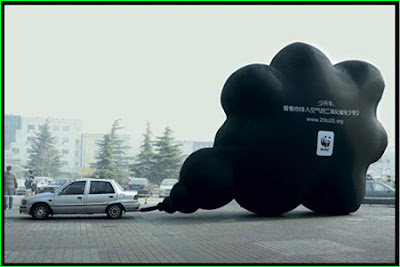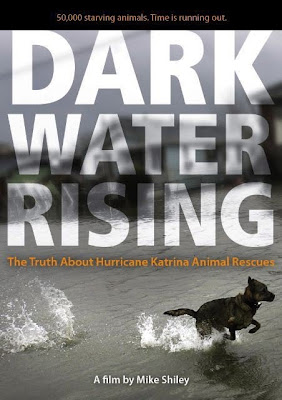terça-feira, 29 de setembro de 2009
Todos deviamos ver
segunda-feira, 21 de setembro de 2009
A era da estupidez
The Age of Stupid Global Trailer w/Brazilian Portuguese subtitles from Age of Stupid on Vimeo.
Sitedomingo, 20 de setembro de 2009
O que se passa hoje algures
 Estima-se que mais de 27 milhões de pessoas no mundo sofrem nas mãos do negócio sujo de tráfico de humanos. Literalmente são escravos: desde trabalho infantil, a exploração de imigrantes, ou a prostituição. 24% das vitimas do tráfico humano são crianças, 66% são mulheres e 79% do total das vitimas são sujeitas a exploração sexual (dizendo assim não dá bem para entender o que isto significa, é inimaginável). A ideia é tão estranha na nossa Europa moderna que dificilmente compreendemos como é que alguém cai nas mãos de tráfico humano. É por isso que vos mostro este documentário. Atentem bem para onde é que a maioria das vitimas de tráfico humano com fins sexuais se destinam (não, não é a Turquia).
Estima-se que mais de 27 milhões de pessoas no mundo sofrem nas mãos do negócio sujo de tráfico de humanos. Literalmente são escravos: desde trabalho infantil, a exploração de imigrantes, ou a prostituição. 24% das vitimas do tráfico humano são crianças, 66% são mulheres e 79% do total das vitimas são sujeitas a exploração sexual (dizendo assim não dá bem para entender o que isto significa, é inimaginável). A ideia é tão estranha na nossa Europa moderna que dificilmente compreendemos como é que alguém cai nas mãos de tráfico humano. É por isso que vos mostro este documentário. Atentem bem para onde é que a maioria das vitimas de tráfico humano com fins sexuais se destinam (não, não é a Turquia).district 9

sábado, 19 de setembro de 2009
Up
quinta-feira, 17 de setembro de 2009
Pérolas das legislativas 2009
err...
NEXT!
segunda-feira, 14 de setembro de 2009
O corpo das mulheres

sexta-feira, 11 de setembro de 2009
fallen princesses

bendito machines
quinta-feira, 10 de setembro de 2009
Got the point?


Este é um anuncio para o "WWF save the Earth": um balão insuflável preso a um tubo de escape. Acho que transmite bem a mensagem.
Mais anúncios criativos aqui.
quarta-feira, 9 de setembro de 2009
Mudar o discurso

A sexualidade de cada um sofre muito com a falta de auto-estima, mais do que com a falta de todos os milhões de atributos físicos perfeitos que é suposto termos. Auto-estima é das caracteristicas fisicas mais atraentes. E pode ser impressão minha, mas tenho notado que esta obsessão pelo físico feminino juntamente com um diminuir da sua auto-estima física, está a adquirir contornos estranhos, até mesmo entre as minhas amigas (mais as portuguesas). Minhas queridas, está na hora de virar o disco que esta canção já enjoa, que é como quem diz, mudar o discurso. É que já basta que eles falem delas, agora tambem temos que levar com elas a falar delas? pensem lá bem.
Adorei este excerto do livro que refere uma das muitas pressões roçando a paranóia, nos tempos que correm: a depilação.
"Why had body hair become such a nemesis for women? It poses no health risks. It is not hygienic to remove; it is not cleansing to shave. Rather, the complications arise during the eradication: cuts, infections, rashes, ingrown hairs, dry skin, burning. Is this hairless ideal yet another variation on the tune of ‘let’s take the best (boobs, curves in some places, hair in very few places) and leave the rest (hips, curves in other places, hair in lots of other places)’? Or is it: ‘Let’s make women look like 8-year-olds so we can treat them as such’? Or is it: ‘If women can fill up their extra hours shaving and obsessing about their bodies, then they won’t have spare time to plot world takeover’? Or maybe it’s: ‘Women are so grossly overpaid and just don’t spend enough on pads, tampons, pantyliners, Ibuprofen, shampoos, conditioners, deodorants, that we should coax them to buy razors, waxes, creams and bleaches.’ A-ha, it’s probably: ‘How about setting another unattainable ideal for women so they will always fall short of the mark.’ I mean, what are women if they’re not feeling insecure about something or another?"
segunda-feira, 7 de setembro de 2009
A liberdade

(imagem daqui)
adagio
Nota de ecila: esta maravilhosa animação Adagio veio do Adágio, um blog a não perder de vista.
we are all dots.

"One day I was looking at the red flower patterns of the tablecloth on a table, and when I looked up I saw the same pattern covering the ceiling, the windows and the walls, and finally all over the room."
Over the years Kusama's work progressed onto photography and performance art. In 1967 she staged 'Body Festivals' and 'Anatomic Explosions'. These basically involved naked people and having polka dots painted on them until the police inevitably turned up. Numerous happening against the war involving naked people and public orgies followed. In the early 70s Kusama returned to Japan. She now lives in a mental institution and has her own private studio to create work.
Themes and motivations:
Kusama calls herself an "obsessional artist". Self-obsession permeates throughout Kusama's artwork as it all relates to her own attempts to come to terms with her psychological and mental condition. Her representation of phalluses depicts her fear of obsessive sexual motifs. Infinte repetitions (infinity nets), patterns and ubiquitous polka dots are her favourite motifs, which she explores through painting, collage, light installations and other forms.
"A polka-dot has the form of the sun, which is a symbol of the energy of the whole world and our living life, and also the form of the moon, which is calm. Round, soft, colourful, senseless and unknowing. Polka-dots can't stay alone; like the communicative life of people, two or three polka-dots become movement... Polka-dots are a way to infinity."
Her work became increasingly dematerialized and less obsessive-compulsive throughout her life, which attests the fact that she managed to use art as a form therapy for herself.
"Every time I have had a problem, I have confronted it with the ax of art."
Jellyfish is in the house

(imagem daqui)
the ugly
Listen with an open mind. Learn.
Follow this link. Each wallpaper hides a story. All stories have English subtitles.
A coproduction The Carter Center and Deutsche Welle
domingo, 6 de setembro de 2009
E assim começa
Fernando Pessoa em o Livro do Desassossego.
sábado, 5 de setembro de 2009
sexta-feira, 4 de setembro de 2009
E ela contou-me as suas experiências durante a guerra II
quinta-feira, 3 de setembro de 2009
quarta-feira, 2 de setembro de 2009
Animais do Katrina

Site oficial
terça-feira, 1 de setembro de 2009
Queria ter uma só para poder dizer isto
Daqui




